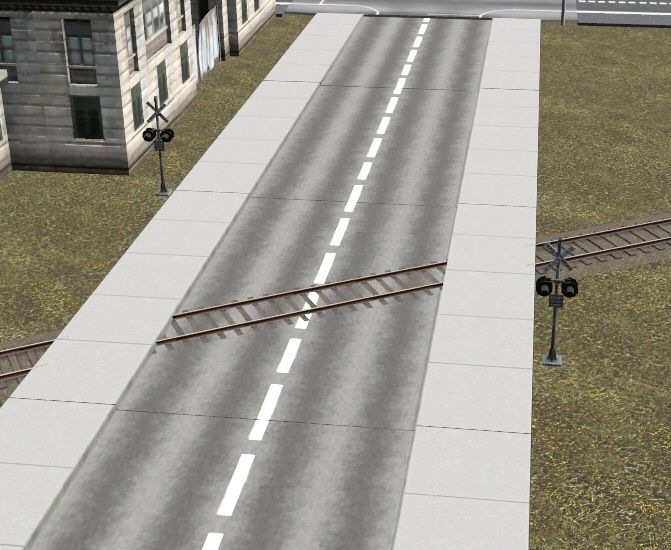I do agree on the minimal signage and the direct in pavement track. Most of the industries I've been to here in the eastern US are this way when it comes to crossings inside facilities and industrial areas. There are also different requirements on "public" versus "private" crossings which change the bulk of the rules regarding crossings. Rule of thumb, if it is a privately (company/individual) owned road then the signage will be as basic as the RR can get away with and higher speeds and denser traffic (road OR rail) increase the signage. Many of the plants I've been to have a stop sign (sometimes with an advanced warning disc, yellow RxR, sign below it) in lieu of the crossbucks and simple crossings usually a pair of rails inside the gauge to protect the flangeways, in warmer climates dirt and gravel crossings will probably omit flangeway protection. I use <kuid2:204652:100698:2> Flangeway Pair and <kuid2:204652:100670:2> Flangeway Single for most of my crossings of this type. However wooden boards are appropriate for places (or times) where mechanical assistance, like a backhoe, is not readily available.




